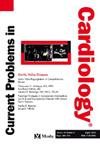夜间高血压和心血管事件:使用倾向评分匹配的风险分析。
IF 3.3
3区 医学
Q2 CARDIAC & CARDIOVASCULAR SYSTEMS
引用次数: 0
摘要
背景:夜间高血压(NHT)与主要不良心血管事件(MACE)和心力衰竭(HF)相关,并且仍然是一个越来越受关注的领域,有证据表明与白天高血压(DTH)相比,夜间高血压(NHT)的影响不同。目的:评估NHT与心血管事件风险之间的关系,独立于白天血压。方法:我们进行了一项观察性研究,该研究基于在三级保健中心接受动态血压监测的患者的连续登记。采用相关临床因素进行倾向评分匹配(1:1),确保组间可比性。主要终点是MACE和HF的综合结果。Cox回归和三次样条模型用于探索非线性关联和确定临界阈值。结果:匹配后,共分析1392例患者(每组691例)。在调整后的模型中,夜间收缩压与MACE/HF风险增加显著相关(HR 1.04; 95% CI: 1.01-1.07),而白天收缩压与MACE/HF风险增加无相关性(HR 0.98; 95% CI: 0.95-1.01)。在多变量模型中,NHT与其他已建立的临床预测因子一起保持其不良反应(HR 1.03; 95% CI: 1.01-1.04)。风险曲线显示出非线性关系,夜间收缩压高于148 mmHg时风险显著增加。结论:NHT单独增加心血管事件的风险,并提供可能改善风险分层的预后阈值。本文章由计算机程序翻译,如有差异,请以英文原文为准。
Nocturnal hypertension and cardiovascular events: risk analysis using propensity score matching
Background
Nocturnal hypertension (NHT) is associated with major adverse cardiovascular events (MACE) and heart failure (HF), and remains an area of growing interest, with evidence suggesting a differential impact compared to daytime hypertension (DTH).
Objectives
To evaluate the relationship between NHT and the risk of cardiovascular events, independently of daytime blood pressure.
Methods
We conducted an observational study based on a continuous registry of patients who underwent ambulatory blood pressure monitoring at a tertiary care center. Propensity score matching (1:1) was applied using relevant clinical factors to ensure comparability between groups. The primary outcome was the composite of MACE and HF. Cox regression and cubic spline models were used to explore non-linear associations and identify critical thresholds.
Results
After matching, 1,392 patients were analyzed (691 per group). In adjusted models, nocturnal systolic blood pressure was significantly associated with increased risk of MACE/HF (HR 1.04; 95 % CI: 1.01–1.07), whereas daytime systolic pressure showed no association (HR 0.98; 95 % CI: 0.95–1.01). In the multivariable model, NHT maintained its adverse effect (HR 1.03; 95 % CI: 1.01–1.04), together with other established clinical predictors. Risk curves demonstrated a non-linear association, with a significant increase in risk above 148 mmHg of nocturnal systolic blood pressure.
Conclusions
NHT independently increases the risk of cardiovascular events and provides prognostic thresholds that may improve risk stratification.
求助全文
通过发布文献求助,成功后即可免费获取论文全文。
去求助
来源期刊

Current Problems in Cardiology
医学-心血管系统
CiteScore
4.80
自引率
2.40%
发文量
392
审稿时长
6 days
期刊介绍:
Under the editorial leadership of noted cardiologist Dr. Hector O. Ventura, Current Problems in Cardiology provides focused, comprehensive coverage of important clinical topics in cardiology. Each monthly issues, addresses a selected clinical problem or condition, including pathophysiology, invasive and noninvasive diagnosis, drug therapy, surgical management, and rehabilitation; or explores the clinical applications of a diagnostic modality or a particular category of drugs. Critical commentary from the distinguished editorial board accompanies each monograph, providing readers with additional insights. An extensive bibliography in each issue saves hours of library research.
 求助内容:
求助内容: 应助结果提醒方式:
应助结果提醒方式:


